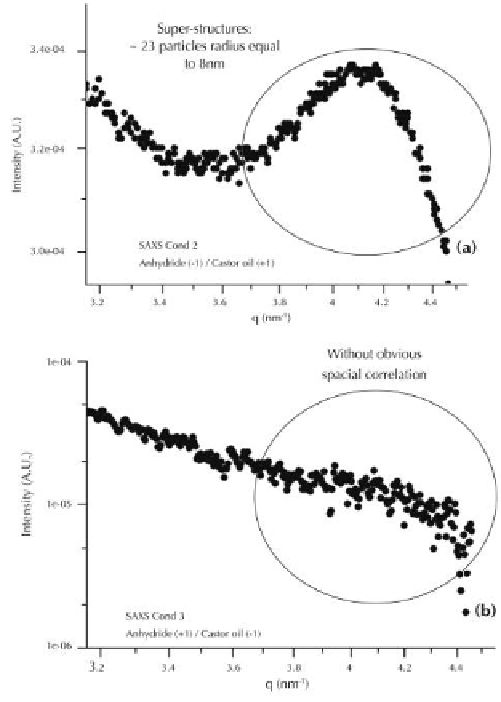Biomedical Engineering Reference
In-Depth Information
The magnetic tests were performed as described to maghemite nanoparticles. The
Figure 17
makes clear that, among the tested conditions, the one which used the lowest
amount of the phtalic anhydride and the highest amount of the castor oil produced the
highest magnetic force. It is also important to notice that the composites containing 5
wt% of the maghemite presented a magnetic force equal to (2.2 ± 0.1) mN/g. This mag-
netic force is enough to the proposed cleanup process (Souza Jr. et al., 2010b).
The obtained magnetic force results seem to be related with the superstructure of
the composite materials. The SAXS results of the composites showed that the condi-
tion of the best magnetic force (lowest level of the anhydride and highest level of the
castor oil) presents superstructures composed by 23 particles of radius equal to eight
nm, Figure 18(a). On the other hand, the composite prepared according the condition
which yields the lowest magnetic force (using the highest level of the anhydride and
the lowest level of the castor oil), as shown in Figure 18(b), presents no obvious spatial
correlation. This result may be related to the presence of rigid polymer structures which
make more difficult the formation of the superstructures, decreasing the magnetic force.
Figure 18.
(a) The SAXS of the composites with the highest (b) and the lowest magnetic force among
tested materials.


Search WWH ::

Custom Search